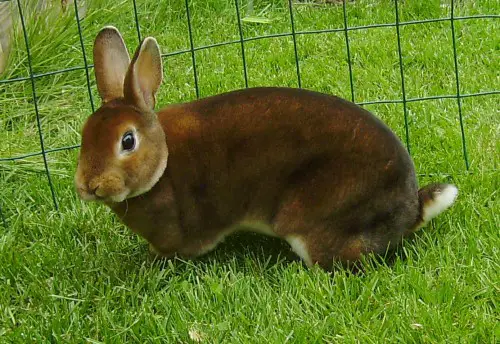By Laurie Stroupe
There’s sometimes a thin line between husbandry or grooming, and faking.
Two of these are necessary practices – one can get you disqualified. In fact, faking can get your whole exhibit disqualified. And it could totally ruin your reputation, including your ability to sell rabbits.
Section 47 of the show rules states that rabbits are to be exhibited in “natural condition.” Examples of faking include:
* dyeing
* plucking
* trimming
* any other action designed to deceive
That last one is the heart of the matter. When you aren’t sure whether you are grooming or faking, asked yourself if you are hoping to deceive the judge. That will generally give you your answer.
So, you are grooming your black rabbit. He has a couple of long white hairs that are pointing in the wrong direction. They appear to be dead. Can you remove them? Is that faking? Ask yourself whether you are trying to make a black rabbit with a few scattered white hairs appear to have none or whether you truly are removing dead hairs, which would fall under grooming. Now you know what to do.
I had a black rabbit with what appeared to be a tiny nip on the tip of her ear. It caused a cluster of about six white hairs that could have been called a spot. A friend of mine pulled them out because they bothered her. Several weeks later, the white hairs had not grown back in. In fact, they never came back. Was that grooming or faking? I think that if they had grown back white and I continued to pluck them to show her, that would be faking. If the dead hairs were removed once and never grew back, then I think that is grooming. It would not have been a good idea for me to show her the day she was plucked, however.
We all know that it is faking if you trim teeth and then show the rabbit.
That’s trying to make a rabbit with bad teeth look as though they have good teeth. That’s faking. However, if you trim the teeth of a rabbit in hopes that they will come back in straight, that’s husbandry. It’s just very important not to show the rabbit until the teeth have grown back out again. Just ask yourself, am I trying to pass off a rabbit with bad teeth as one with good teeth or am I trying to give the teeth a chance to correct?
I really can’t think of any reason to ever dye a rabbit. Some things are clearly wrong. Ditto with trimming. That doesn’t mean you can’t trim your rabbit and then let the wool grow back in before showing. It just means that you can’t trim a rabbit to make it appear to have shorter fur than it does.
In the long run, faking hurts the exhibitor the most. Aside from the fact that the exhbitor would be mortified if caught (or should be), it’s too easy to start thinking that a rabbit that has to be faked to win is actually a good rabbit. If you breed a rabbit with a fault or disqualification that you cover up, you are just asking for more of the same. Do you really want to have to trim teeth on the majority of your herd? That’s what could happen if you decide to fake rather than cull.
It may be tempting to cover up some small fault.
I often think of the time that Roxie came in 11th at Convention. The judge said that he had to fault her for the scattered white hairs. Do I wish I had plucked? Sometimes I’m tempted by that thought. But when I showed her son MLK at Convention this year, he went with his few scattered white hairs, too.
So, refrain from cutting nails down to a nub to hide a white toenail. Don’t even think about using a black marker on a toenail. If scattered white hairs really bother you, cull them out (I don’t particularly care if the rabbit is good enough otherwise). Try to breed a lionhead that really does have a break between the main and side wool. Wait until teeth grow totally back in before showing the rabbit again. You’ll be glad you did.

